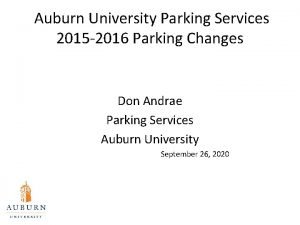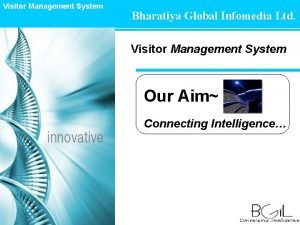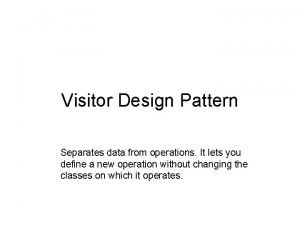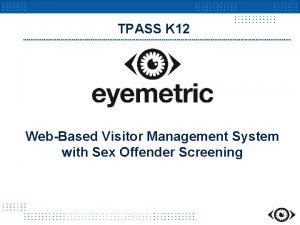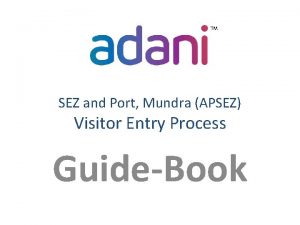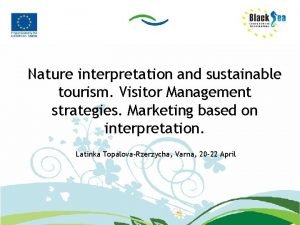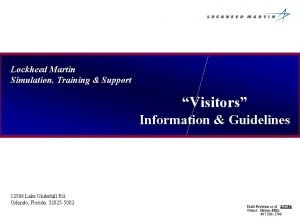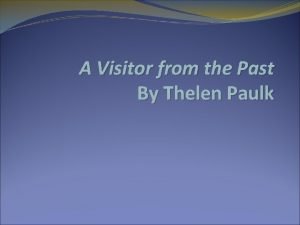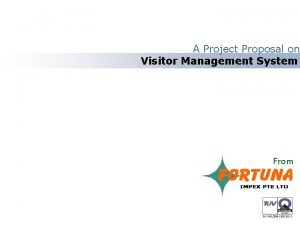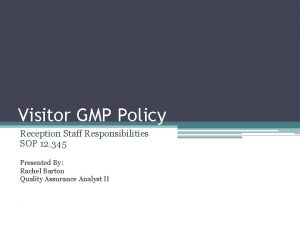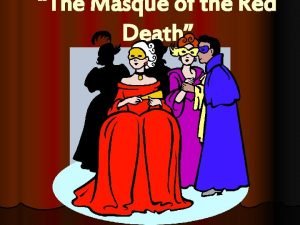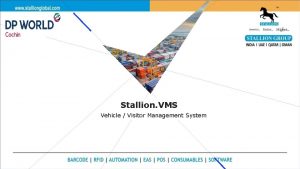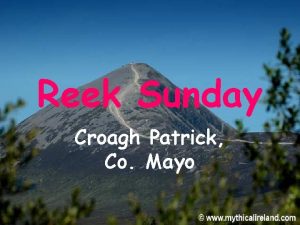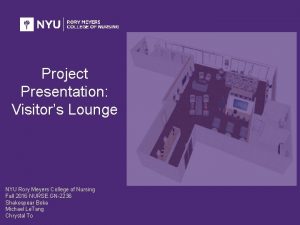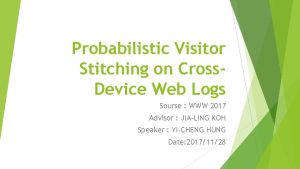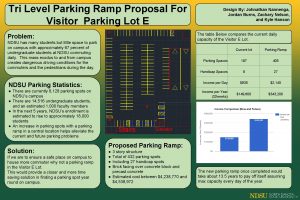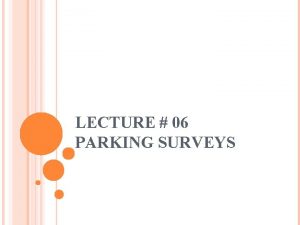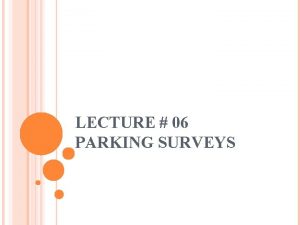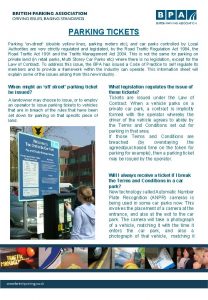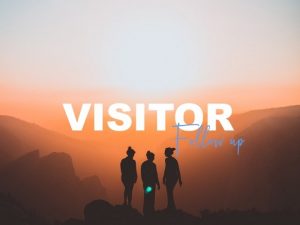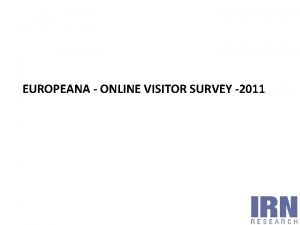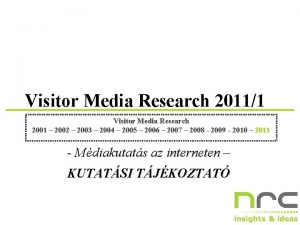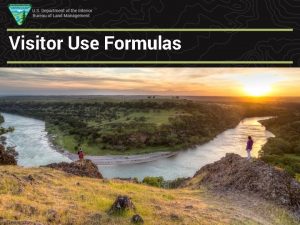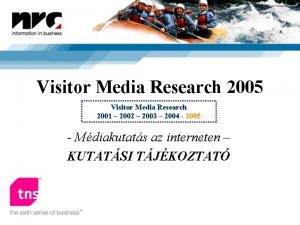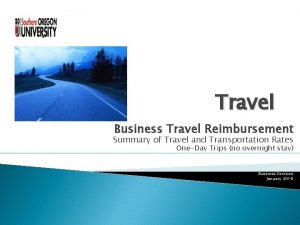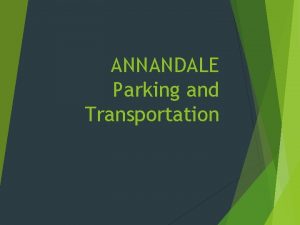Visitor Travel Model Special Events Model and Parking
















- Slides: 16

Visitor Travel Model, Special Events Model and Parking Location Choice Model for Studying Transit Improvements Downtown Dallas Transit Study presented to 12 th TRB National Transportation Planning Applications Conference presented by Arun Kuppam, Cambridge Systematics, Inc. co-authored by Philip Johnson, Dallas Area Rapid Transit Thomas Rossi, Amlan Banerjee, Saurabh Kumar, Cambridge Systematics May 19, 2009 Transportation leadership you can trust.

Objectives To better understand travel behavior of various travel markets to enable examination of a range of transit improvements in Downtown Dallas Hotel visitor travel • Survey – Downtown Dallas hotel survey • Models – Trip generation, destination choice, mode choice Special events travel • Survey – Special events survey at AA and Meyerson Centers • Models – Destination choice and mode choice Parking location choice 1

Project Status Visitor models - Complete Special event models - Under development Parking location choice model – To be developed in June 2

Visitor Travel Model Survey Data Total interviews – 910; Useable records – 896 § Large hotel ( 600+ rooms ) : 296 § Medium hotel ( 200 – 599 rooms ) : 336 § Small hotel ( < 200 rooms ) : 264 Male – 53%; Female – 47% Business visitors – 83%; Leisure visitors – 17% Arrival to Dallas – Airplane: 79% Private vehicle: 17% Arrival to hotel from airport – Shuttle: 38% Taxi: 29% Rental car: 21% § Transit < 1% 3

Visitor Travel Model Overview General structure § Trip production model – trip rate per hotel room for business and leisure travelers § Trip attraction model – separate regression models for business and leisure travelers § Trip attractions = B 1 * zonal employment + B 2 * zonal pop + …. § Destination choice – four multinomial logit models § CBD (business, leisure); Non-CBD (business, leisure) § Mode choice – nested logit models § Business visitor and leisure visitor models Relationship to NCTCOG model § Source of hwy and transit LOS skims – IVT, OVT, Dist, Cost 4

Visitor Travel Model Trip Production Trip rates per hotel room 5 Eat Meal Other Business NHB ALL Business 0. 83 0. 36 0. 91 0. 10 2. 20 Leisure 0. 57 1. 51 0. 06 0. 40 2. 53

Visitor Travel Model Trip Attraction CBD Model • Business Visitors § Trip attractions = 0. 157 * Service Employment • Leisure Visitors § Trip attractions = 0. 101 * Service Employment Non-CBD Model Trip Purpose 6 Percent Trips Attracted to CBD Percent Trips Attracted to Non-CBD Hotel based meal 64% 36% Hotel based business 79% 21% Hotel based other 40% 60% Non-hotel based 49% 51% TOTAL 62% 38%

Visitor Travel Model Destination Choice: Specification Estimated models § CBD model (Business, Leisure) § Non-CBD (Business, Leisure) Multinomial Logit Specification § Utility of zone ‘i’: § Xki= zonal attributes, LOGSUM computed from MC model § 7 = utility of modal alternative k from zone i to zone j computed from the mode choice model

Visitor Travel Model Destination Choice: Estimation Results CBD Model Leisure Variable Coeff t-stat Logsum 0. 998 5. 54 0. 475 4. 58 Distance -0. 374 -2. 67 1. 00 Fixed 1. 00 fixed log of trip attraction (size variable) rho 2 w. r. t. zero Non-CBD Model 0. 174 0. 132 Business Leisure Variable Coeff t-stat Logsum 0. 309 2. 19 1. 350 3. 57 Square of logsum 0. 204 1. 47 0. 630 3. 10 Cube of logsum 0. 106 2. 24 0. 096 2. 99 log of trip attraction (size variable) 1. 00 fixed rho 2 w. r. t. zero 8 Business 0. 101 0. 103

Visitor Travel Mode Choice: Specification Two estimated models § Business visitor model and Leisure visitor model Nest Structure Auto Walk Shuttle Model Variables § LOS = IVT + K 1 * OVT+ K 2* COST § Inter-zonal Distance (miles) § Auto availability § CBD 9 Taxi Bus Transit Light Rail

Visitor Travel Mode Choice: Estimation Results Business Visitors Model Variable Auto Constant LOS (min) -0. 020 Shuttle Rail Bus Taxi Walk 0. 777 (4. 0) -2. 73 (-9. 1) 0. 353 (4. 7) -0. 235 (-3. 2) -0. 731 (-3. 2) -0. 020 Distance (miles) -3. 15 (-9. 3) Auto availability -1. 45 (-6. 3) CBD 3. 17 (12. 0) -0. 286 (-3. 6) rho 2 (0) = 0. 298 § Transit nest coefficient = 0. 33 (4. 4) § VOT = $4. 62/hr 10 -0. 286 (-3. 6) -1. 45 (-6. 3) 1. 09 (3. 9)

Visitor Travel Mode Choice: Estimation Results Leisure Visitors Model Variable Auto Constant LOS (min) -0. 020 Shuttle Rail Bus Taxi -3. 89 (-9. 0) -0. 361 (-1. 7) -1. 09 (-5. 1) 0. 708 (2. 8) -0. 020 Distance (miles) Auto availability CBD 1. 03 (1. 1) -4. 12 (-7. 0) -1. 79 (-6. 4) -1. 68 (-5. 8) 2. 54 (4. 0) rho 2 (0) = 0. 319 § Transit nest coefficient = 0. 67 (2. 0) § VOT = $2. 45/hr 11 Walk -1. 68 (-5. 8) -1. 79 (-6. 4) 1. 76 (2. 6)

Special Events Model Survey Data Completed Interviews § American Airlines Center – 548 § Meyerson Center – 411 88% came downtown only for the event Trip origin § In the City of Dallas – 27% § Outside Dallas – 73% Mode Choice § Auto – 89% 12 Transit – 7%

Special Event Model Overview Origin/Destination choice model § Multinomial logit model § Given small sample size, market segmentation may not be plausible Mode choice model § Auto dominant mode of arrival; estimation of mode choice model possible without market segmentation § Binary logit model (auto vs. transit) Relationship to NCTCOG model § Source of highway and transit LOS skims – IVT, OVT, distance, cost 13

Parking Location Model Overview Model will be developed using logit formulation for auto trips to Dallas Downtown To be integrated with NCTCOG mode choice model Model will also include trips intercepted outside downtown and continue to the destination using transit Variables to be considered (NCTCOG model): § Total travel time § Walk time to destination § Number of transfers § Transit wait time § Parking cost and transit fare 14

Next Steps Models will be validated using weighted survey data and other sources of travel data All the demonstrated model components being implemented using Trans. CAD GISDK script Trans. CAD programming will be consistent with and use the NCTCOG zonal and network database 15
 C zone parking auburn
C zone parking auburn Mutually exclusive vs non mutually exclusive
Mutually exclusive vs non mutually exclusive Governor teacher inspector and visitor will break
Governor teacher inspector and visitor will break Visitor management system project documentation
Visitor management system project documentation Visitor pattern uml
Visitor pattern uml K12 visitor management
K12 visitor management Visitor pass adani
Visitor pass adani Tourism interpretation
Tourism interpretation Lockheed martin orlando visitor center
Lockheed martin orlando visitor center A visitor from the past
A visitor from the past Project report on visitor management system
Project report on visitor management system Visitor management sop
Visitor management sop Envy in the masque of the red death
Envy in the masque of the red death Visitor vehicle management system
Visitor vehicle management system Croagh patrick visitor centre
Croagh patrick visitor centre Nyu visitor
Nyu visitor Cross-device identity stitching
Cross-device identity stitching
